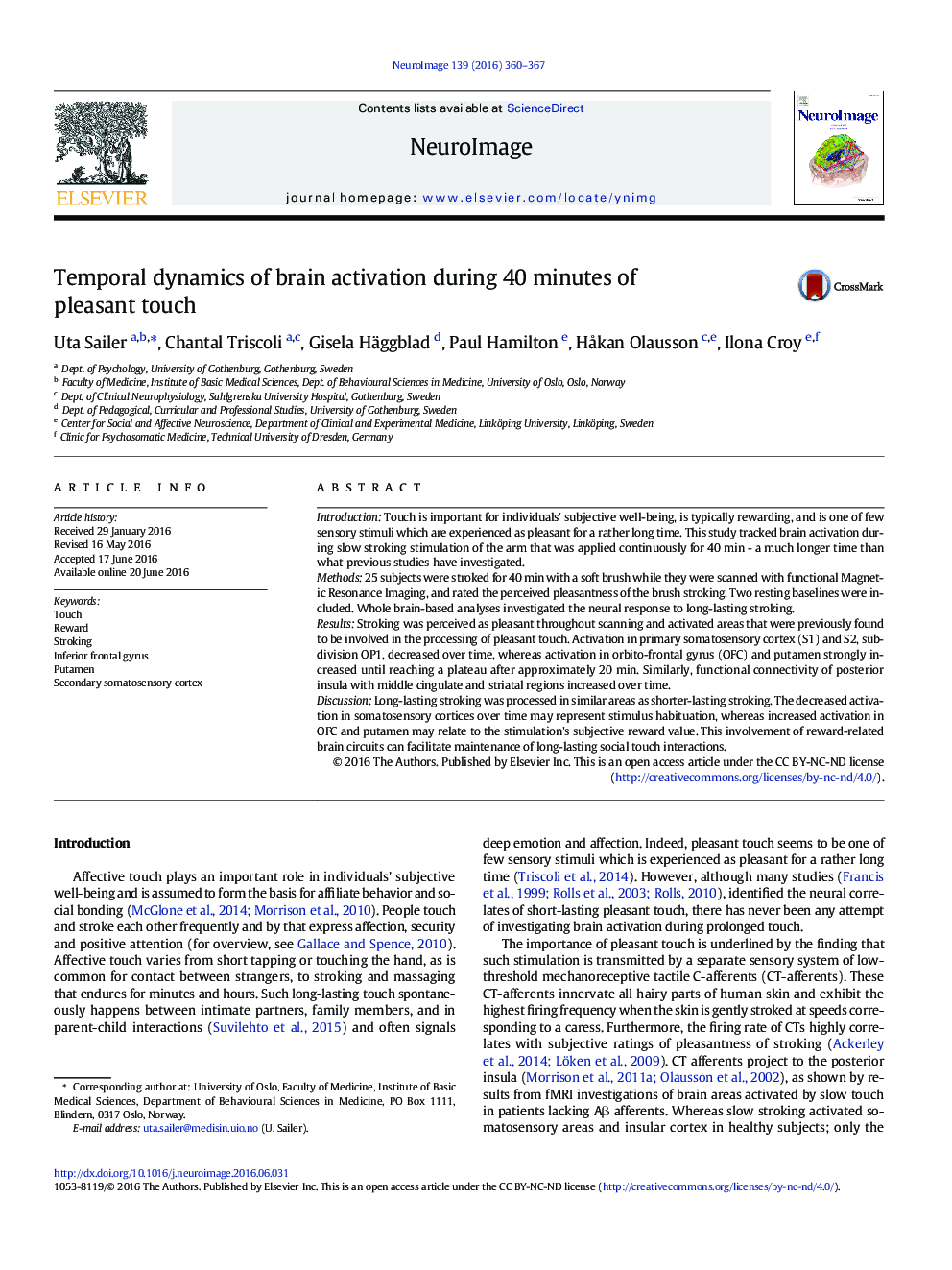| کد مقاله | کد نشریه | سال انتشار | مقاله انگلیسی | نسخه تمام متن |
|---|---|---|---|---|
| 6023462 | 1580869 | 2016 | 8 صفحه PDF | دانلود رایگان |
- Long-lasting stroking is processed in similar brain areas as shorter-lasting stroking.
- The decreased activation in somatosensory cortices over time may represent stimulus habituation.
- Increased activation in OFC and putamen may be related to the stimulation's subjective reward value.
- The involvement of reward-related brain circuits can facilitate maintenance of long lasting social touch interactions.
IntroductionTouch is important for individuals' subjective well-being, is typically rewarding, and is one of few sensory stimuli which are experienced as pleasant for a rather long time. This study tracked brain activation during slow stroking stimulation of the arm that was applied continuously for 40Â min - a much longer time than what previous studies have investigated.Methods25 subjects were stroked for 40Â min with a soft brush while they were scanned with functional Magnetic Resonance Imaging, and rated the perceived pleasantness of the brush stroking. Two resting baselines were included. Whole brain-based analyses investigated the neural response to long-lasting stroking.ResultsStroking was perceived as pleasant throughout scanning and activated areas that were previously found to be involved in the processing of pleasant touch. Activation in primary somatosensory cortex (S1) and S2, subdivision OP1, decreased over time, whereas activation in orbito-frontal gyrus (OFC) and putamen strongly increased until reaching a plateau after approximately 20Â min. Similarly, functional connectivity of posterior insula with middle cingulate and striatal regions increased over time.DiscussionLong-lasting stroking was processed in similar areas as shorter-lasting stroking. The decreased activation in somatosensory cortices over time may represent stimulus habituation, whereas increased activation in OFC and putamen may relate to the stimulation's subjective reward value. This involvement of reward-related brain circuits can facilitate maintenance of long-lasting social touch interactions.
Journal: NeuroImage - Volume 139, 1 October 2016, Pages 360-367
